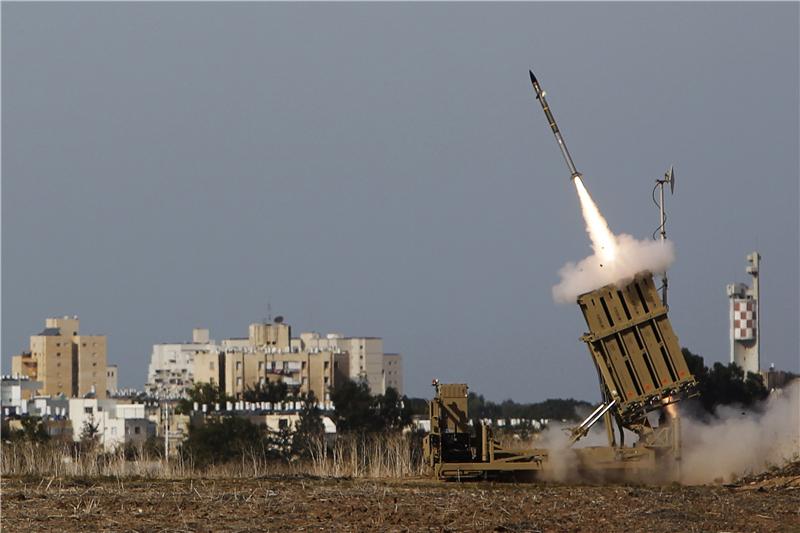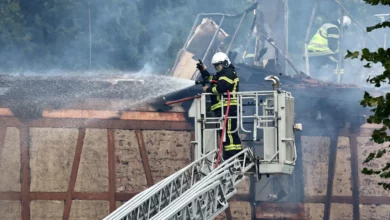
L’ASILE, Haiti (AP) — The problems in Haiti may be summed up by the public hospital in L’Asile, deep in a remote stretch of countryside in the nation’s southwest area. Here, a full four days after a powerful earthquake hit this region the hardest, people are still showing up from isolated villages with broken arms and legs.
Hospital director Sonel Fevry said five such patients showed up Tuesday, the same day officials raised the disaster’s death toll by more than 500. Grinding poverty, poor roads and faith in natural medicine all conspire to make the problems worse.
“We do what we can, remove the necrotized tissue and give them antibiotics and try to get them a splint,” Fevry said, adding that road access to the facility in the department of Nippes is difficult and not everyone can make it.
Haiti’s Civil Protection Agency increased the number of fatalities from Saturday’s earthquake to 1,941. It also raised the number of injured to 9,900, many of whom have had to wait for medical help lying outside in wilting heat and riding out a storm Monday night that brought heavy rains and wind gusts.
The countryside was worse hit by the quake, perhaps, than the cities, but news is only slowly trickling out. The whole obstetrics, pediatric and operating wing at the L’Asile hospital collapsed, though everyone made it out. Despite the collapse, the hospital was able to treat about 170 severely injured quake victims in improvised tents in the facility’s yard.
The nearby countryside was devastated: In one 10-mile (16-kilometer) stretch not a single house, church, store or school was left standing.
Surprisingly, some of the traditional, old style wood-and-pressed-mud homes offered their inhabitants a better chance of survival as their tin roofs remained standing, even after their relatively light walls crumbled. But traditional knowledge was not serving Haiti well in a medical sense.
“We know that many of us Haitians prefer to remain at home and treat themselves with leaves and natural remedies,” Fevry said, further delaying their arrival at hospitals.
Officials said the magnitude 7.2 earthquake destroyed more than 7,000 homes and damaged nearly 5,000, leaving about 30,000 families homeless. Hospitals, schools, offices and churches also were demolished or badly damaged.
Rain and wind from Tropical Storm Grace raised the threat of mudslides and flash flooding as the system slowly passed over southwestern Haiti’s Tiburon Peninsula before heading toward Jamaica and southeastern Cuba. The storm forced a temporary halt to search and rescue efforts, feeding growing anger and frustration among thousands who were left homeless.
Bodies continued to be pulled from the rubble in southwestern Haiti. In the community of Les Cayes, the smell of death hung heavily over a pancaked, three-story apartment building. A simple bed sheet covered the body of a 3-year-old girl that firefighters had found an hour earlier.
Neighbor Joseph Boyer said he knew the girl’s family.
“The mother and father are in the hospital, but all three kids died,” he said. The bodies of the other two siblings were found earlier.
Illustrating the lack of government presence, volunteer firefighters from the nearby city of Cap-Haitien left the girl’s body out in the rain because there were no police officers, who had to be present for a body to be taken away.
A throng of angry, shouting men gathered in front of the collapsed building, a sign that patience was running out for people who have waited days for help from the government.
The head of the Civil Protection Agency, Jerry Chandler, acknowledged the situation. Earthquake assessments had to be paused because of the heavy rain, “and people are getting aggressive,” Chandler said.
Haiti is the Western Hemisphere’s poorest nation. Residents already were struggling with the coronavirus pandemic, gang violence, worsening poverty and the July 7 assassination of President Jovenel Moïse when the quake hit.
Etzer Emile, a Haitian economist and professor at Quisqueya University, a private institution in the capital of Port-au-Prince, said the earthquake’s impacts will almost certainly result in even more long-term poverty for the country’s struggling southwest region. Political instability and gang criminality along the southern roads into the region have particularly hobbled economic activity in recent years.
“The earthquake has just given a fatal blow to a regional economy already on its knees for about two-and-a-half years” Emile said in an email.
Dependence on remittances from abroad and assistance from international non-governmental groups will only accelerate, he said, likely making Haiti even weaker.
“Foreign aid unfortunately never helps in the long term. The southwest needs instead activities that can boost economic capacity for jobs and better social conditions,” he said.
Foreign aid has already begun to arrive.
Sarah Charles, assistant administrator for the US Agency for International Development’s Bureau for Humanitarian Assistance, said its disaster response teams were forced to suspend operations as the storm arrived Monday, but members were back Tuesday to assess its impact and continue helping.
“We do not anticipate that the death toll related to this earthquake will be anywhere near the 2010 earthquake, where more than 200,000 people were killed,” Charles told reporters.
The US military’s Southern Command said it was moving eight helicopters from Honduras to Haiti. Three US Coast Guard helicopters had already assisted in life-saving transports and moved 17,350 pounds of cargo. A US Navy amphibious warfare ship, the USS Arlington, was expected to head for Haiti on Wednesday with a surgical team and landing craft.
___
Associated Press writers Trenton Daniel in New York, Regina Garcia Cano in Mexico City and David McFadden in Baltimore contributed to this report.




